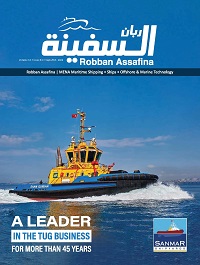“New technologies for greener shipping” is this year’s World Maritime Day theme in a bid to reflect some of the most pressing environmental challenges increasingly affecting the future of the world and the maritime industry.
#Climatechange, marine pollution, and maintaining biodiversity are among the most alarming issues at the top of the shipping industry’s agenda. Accounting for over 80% of the world’s transported goods, ships, which mostly use fossil fuels, produce CO2 emissions that significantly contribute to global climate change and acidification.
In addition, underwater noise generated by ships, plastics waste from #vessels and water contamination from biofouling are only a few ways in which shipping pollutes the world’s oceans, significantly affecting marine life and ecosystem balance. It goes without saying that the promotion of green sustainability and sustainable maritime development is one of the major priorities of IMO in the coming years.
With this in mind, the theme seeks to highlight the need to support a green transition of the maritime sector into a sustainable future. More specifically, the IMO aimed at an opportunity to promote inclusive innovation R&D and technology cooperation and to showcase solutions for decarbonization and more environmentally friendly shipping, especially in the context of developing countries, and in particular the small island developing States (SIDS) and least developed countries (LDCs). The topic namely addresses four of the 17 UN Sustainable Development Goals:
- SDG 13 (Climate change)
- SDG 14 (Life below water)
- SDG 9 (Industry innovation)
- SDG 17 (Importance of partnerships)
New technologies for greener shipping
On the occasion of this World Maritime Day theme, the IMO presented some of the potential game-changing green technologies for the future of shipping:
Propeller Boss Cap Fins: The Maritime Technology Cooperation Centre (MTCC) in the Pacific is funding the installation of Propeller Boss Cap Fins (PBCF) on a Fijian government ship. PBCF is an energy-saving device attached to the propeller that can enhance propeller efficiency. The technology is already known for reducing fuel consumption, thus saving around 9,000 tons in emissions per ship annually.
Solar power for cargo ships: The same Centre supported the trial of marine solar power systems on two ships to power electricity needs, especially when in port. This resulted in overall GHG reduction of more than 50%. Shore power can be used by marine vessels to plug into the local electricity grid and turn off auxiliary engines while at dock. According to US EPA, when a vessel is connected to shore power, overall pollutant emissions can be reduced by up to 98% when utilizing power from the regional electricity grid, under the right circumstances.
AI for ship trim optimization: The MTCC in Asia is using artificial intelligence to analyze data on ship trim and optimization, which could lead to more efficient and greener ship operation. The trim and/or draft of the ship influences the hull resistance and therefore the fuel consumption. In general, limited regard to optimal trim and draft is taken when loading the ship and therefore optimal conditions will most often not be achieved. By actively planning cargo loading, and thereby optimizing the trim and draft, one can save fuel and reduce the emissions accordingly.
Improving biofouling management: The accumulation of aquatic organisms on ships’ hulls, known as biofouling, poses a significant risk for the marine environment, as ships transfer these micro-organisms to new ecosystems in different regions, threatening their balance. #IMO’s GloFouling project is promoting the development of new technologies to prevent and manage marine biofouling, with the aim of increasing energy efficiency and protecting biodiversity by preventing the spread of invasive aquatic species. Examples include in-water cleaning systems, new anti-fouling components and the use of robotics for monitoring and inspecting surfaces.
Solar-powered fishing boat: The MTCC in the Pacific has supplied fisherwomen in Nakalawaca village, Fiji, with a fiberglass boat fitted with a solar-powered outboard electric engine – the first such boat in the Pacific.
"All of these projects highlight the need for all stakeholders across the maritime sector to work together and find the solutions and I know that we can all do this," said Mr. Kitack Lim, Secretary General of the IMO, in his World Maritime Day message.
ICYMI
For this year’s celebration, the IMO has invited maritime stakeholders to:
- share information on social media about what technologies they are using or actions they are taking to make shipping greener, under the hashtag #WorldMaritimeDay
- light up buildings, bridges, ports, ships, monuments, museums, and other emblematic landmarks in blue and green and send their pictures to media@imo.org. The aim of this global initiative is to draw attention to the World Maritime theme and initiate conversations with the wider public.
Source: Safety4sea






